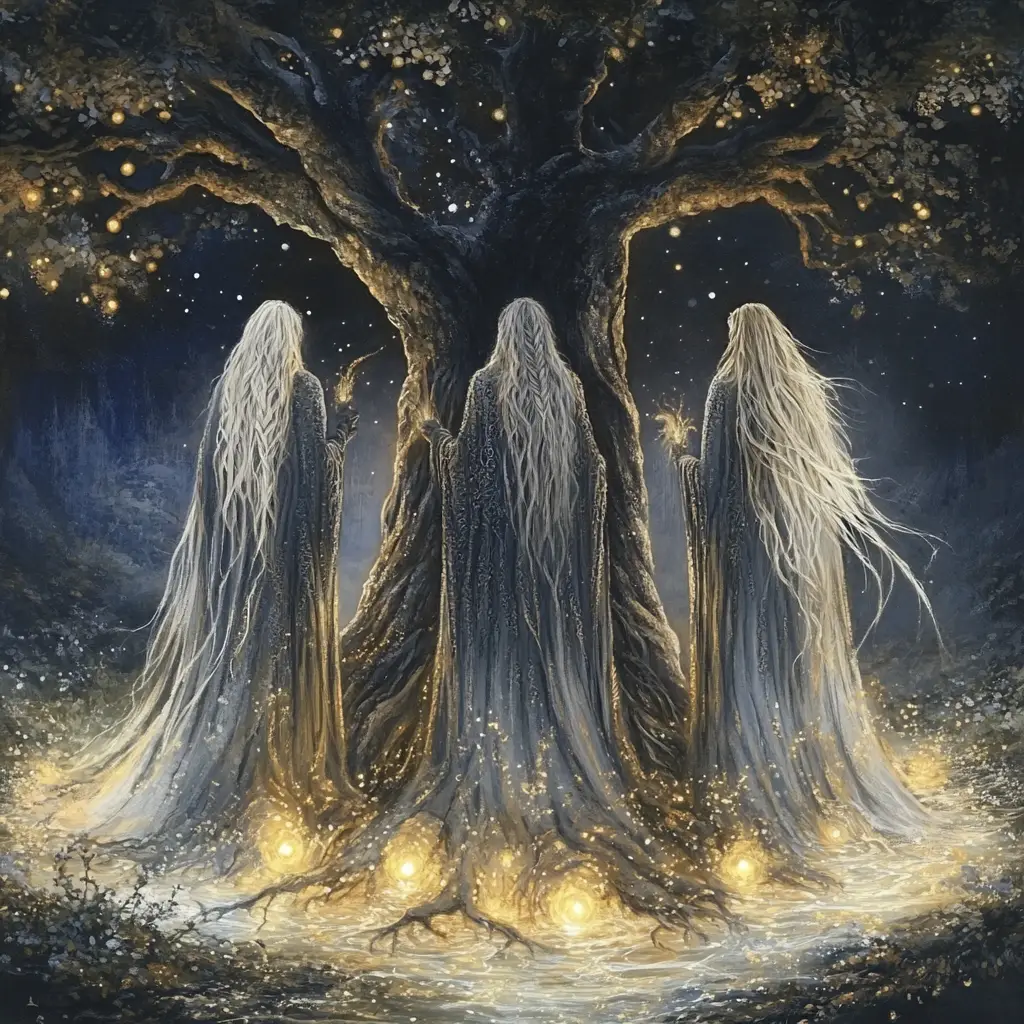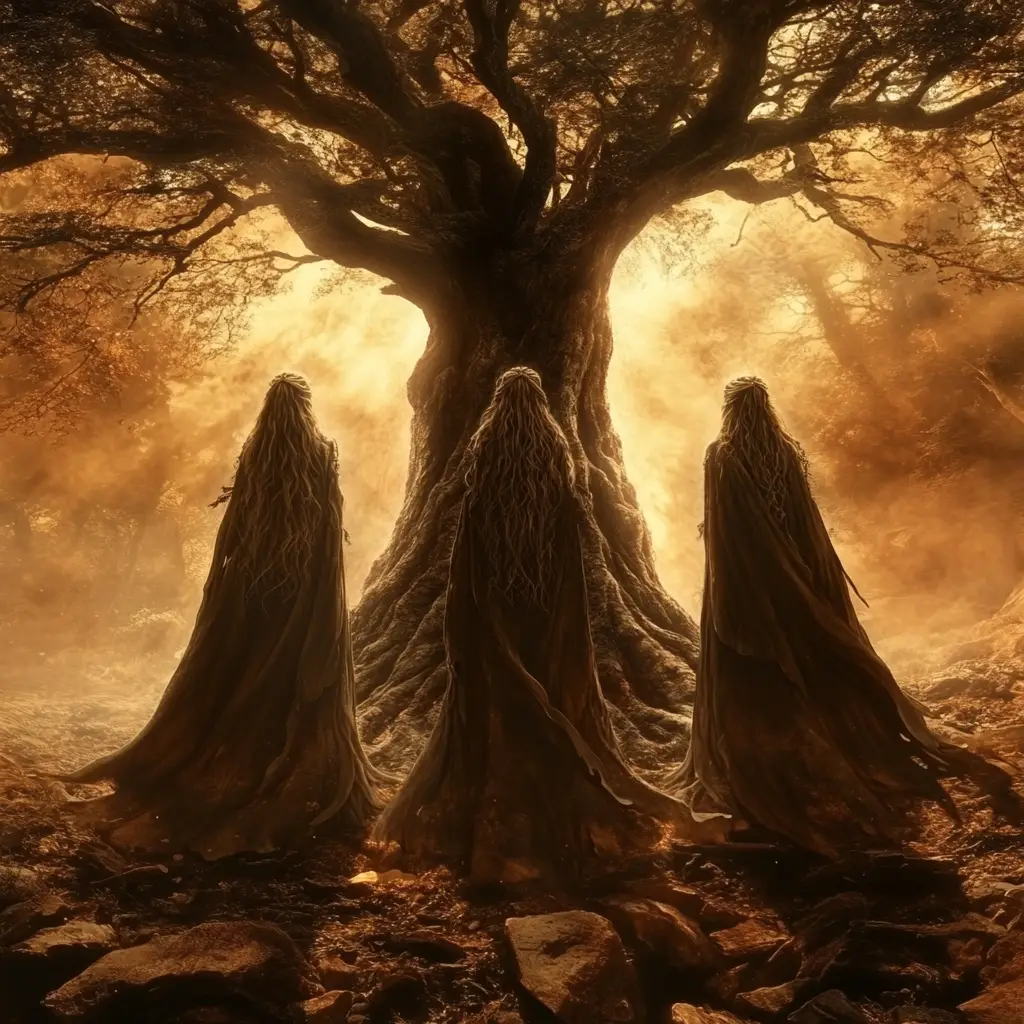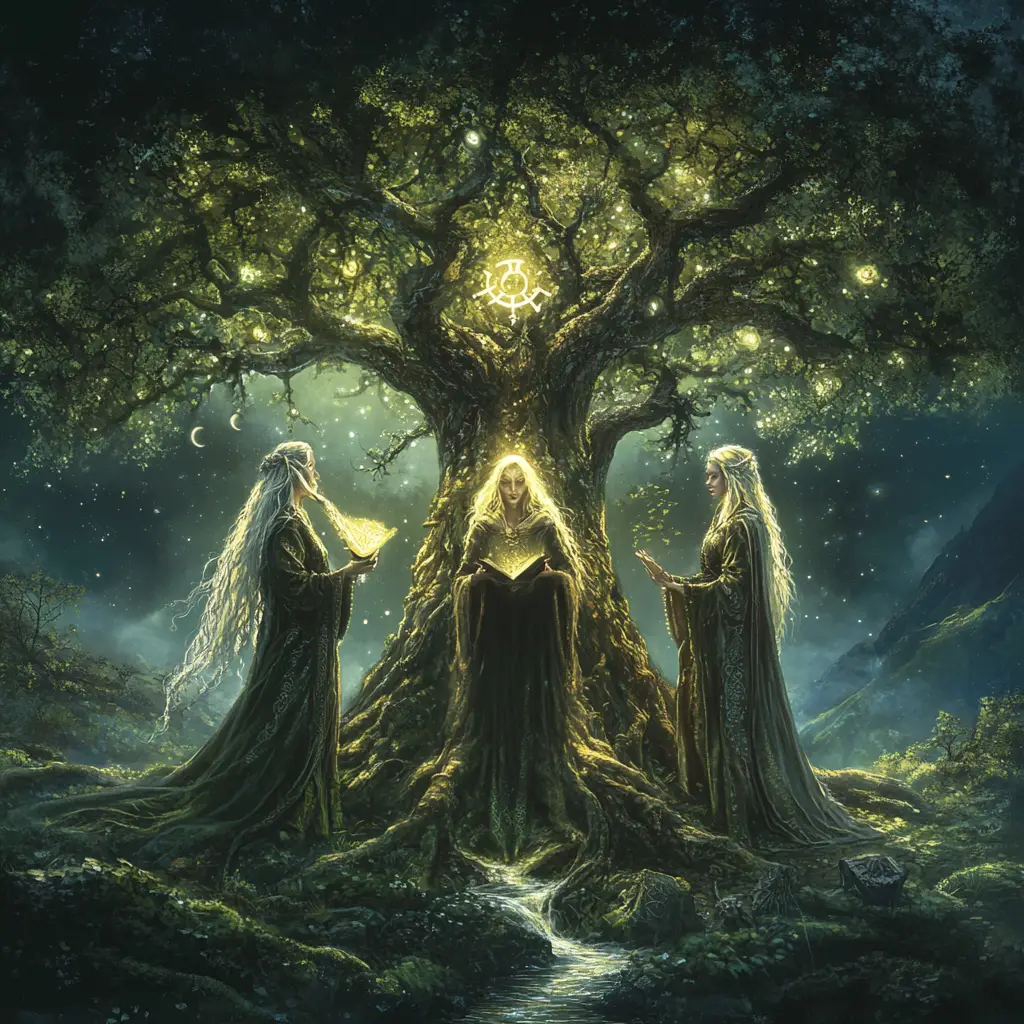In Norse mythology, the Three Norns—Urd, Verdandi, and Skuld—are powerful beings who govern the destiny of gods and men alike. These mystical figures reside at the roots of Yggdrasil, the World Tree, weaving the threads of fate that connect all living things.
Who Are the Norns?
Urd (The Past): Representing what has been, Urd embodies ancient wisdom and the foundation of existence. She is often depicted as an aged woman, wise and reflective.
Verdandi (The Present): The Norn of the present, Verdandi focuses on the now. She is youthful and vibrant, actively weaving the fabric of life as it unfolds.
Skuld (The Future): Enigmatic and shadowy, Skuld represents what is yet to come. She is often seen holding a scroll, symbolizing the unwritten chapters of destiny.
The Norns and Their Role
The Norns are said to draw water from the sacred Well of Urd to nourish the roots of Yggdrasil, ensuring the tree—and the cosmos it supports—remains vital. They are seen as both benevolent and impartial, shaping the fates of all beings without interference or favour.
Symbolism of the Norns
The Three Norns are symbolic of time’s flow:
Urd connects us to history and memory.
Verdandi anchors us in the present moment.
Skuld reminds us of the unknown future, urging us to act with purpose.
The Norns in Modern Culture
The Norns continue to inspire art, literature, and philosophy, embodying themes of time, destiny, and the interconnectedness of life. Whether you’re drawn to their mythological roots or their timeless symbolism, the Norns hold a powerful place in the human imagination.
Discover the legacy of the Norns and their enduring wisdom, a reminder that all threads are connected in the tapestry of existence.




